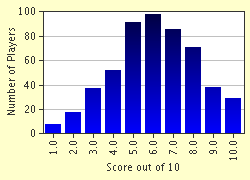Quiz Answer Key and Fun Facts
1. An epileptic, and the youngest of twenty children, this English artist and writer was mainly raised by his elder sister, Anne. Travelling widely in Italy and Greece he published his sketches in a series of travel books. Later, befriending his patron's grandchildren, he entertained them by writing amusing verse. Enough clues, who is he?
2. This artist was a founder member of the Pre-Raphaelite Brotherhood. In 1860 he married a milliner's assistant/artists' model, whom he referred to as Guggums, and was devastated by her death two years later from an overdose of laudanum. After this time he became something of a recluse, suffering a nervous breakdown, and seeing his work become increasingly morbid. Who was this disturbed man?
3. Much inter-marrying took place in this aristocratic artist's family; his parents being first cousins, and his mother's brother marrying his father's sister. Not a fan of landscape painting he once declared "The painter who paints purely landscape is a villain." Who was this short short-sighted man?
4. The son of a Protestant pastor, this prolific artist was mentally unstable, moody and difficult. Supported by his younger brother, to whom he wrote "I cannot help it that my paintings do not sell. The day will come when people will see that they are worth more than the price of the paint". He is said to have shot himself at the scene of his final painting, dying in his devoted brother's arms two days later. Who was this deeply unhappy man?
5. A famous wit, this American artist spent part of his childhood in Russia whilst his father, an engineer, worked on the Czar's railway project. He later moved to Paris and subsequently settled in London, where he became President of the Royal Society of British Artists. Who was the man who used a butterfly emblem as his signature?
6. Outspoken and aggressive, this London-born English artist was highly committed to social reform, highlighting the moral issues of the day in his satirical engravings and paintings. Who was this author of 'The Analysis of Beauty'?
7. Often painting his subjects from an elevated viewpoint, this artist preferred working outside. Regarded as one of the founders of Impressionism (the movement that took its name from his painting 'Impression: Soleil Levant'), he exhibited three paintings at the Paris World Fair in 1899. Who was this pipe-smoking Frenchman?
8. The illegitimate son of a notary and a peasant girl, this Italian artist was described as "striking and handsome". As well as being a very strong and muscular athlete, he was a brilliant scientist, engineer and inventor. Who was this all-round genius?
9. Famous for his uncompromising and unflattering portraits, this chocolate loving Spanish artist was also an accomplished etcher, and taught himself the art of lithography. He lost his hearing at the age of 47 after contracting meningitis, but went on to become First Court Painter six years later. Having spent the final four years of his life in France, he was buried in Bordeaux for 66 years, before his body (minus the skull) was moved to Madrid. Enough clues, who was he?
10. A poorly educated man, this British painter struggled just to write a sentence. His first watercolour, entitled 'The Archbishop's Palace, Lambeth', was exhibited at London's Royal Academy when he just 15 years old. Six years later, after the showing of his first oil painting, his name was made. What was it?
Source: Author
fringe
This quiz was reviewed by FunTrivia editor
bloomsby before going online.
Any errors found in FunTrivia content are routinely corrected through our feedback system.


